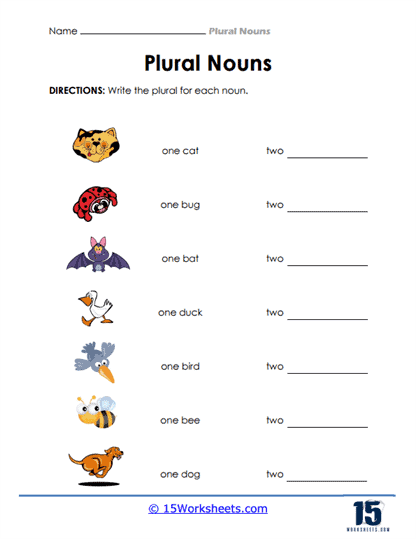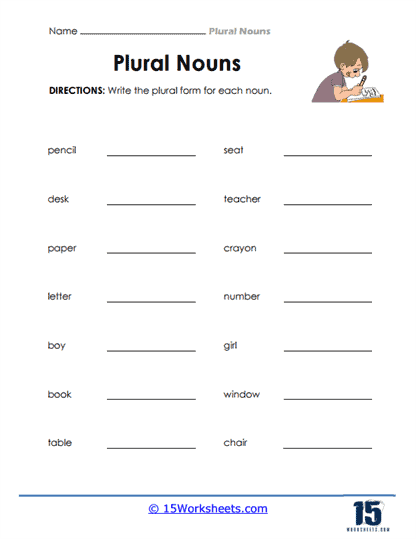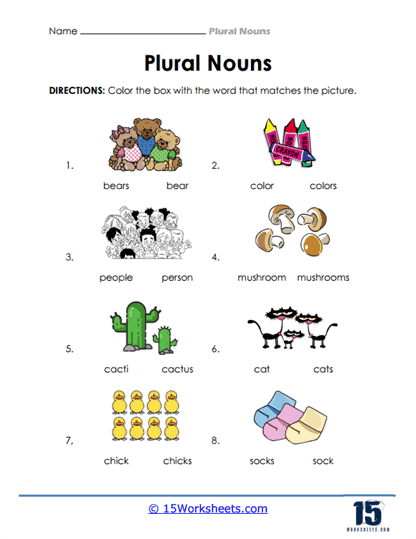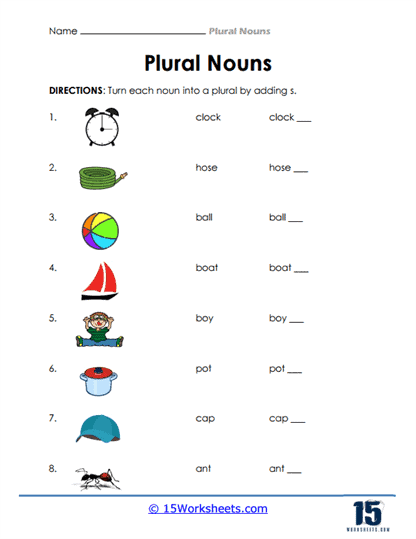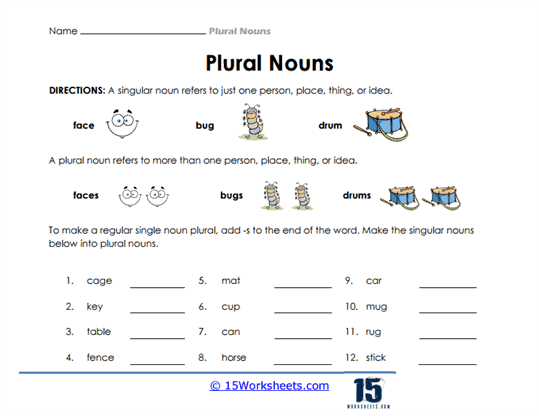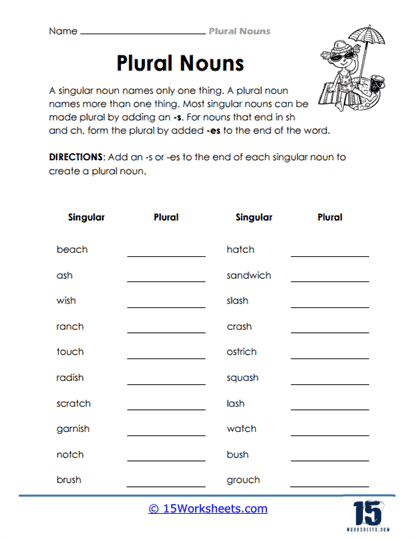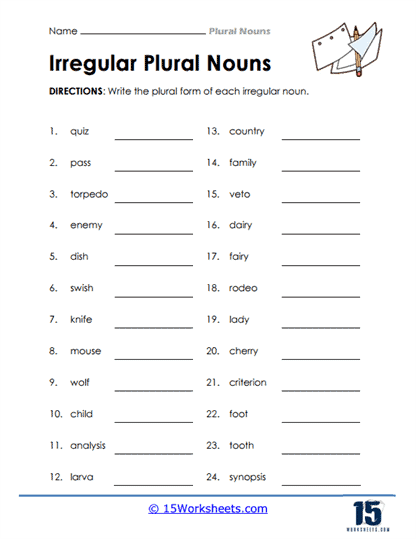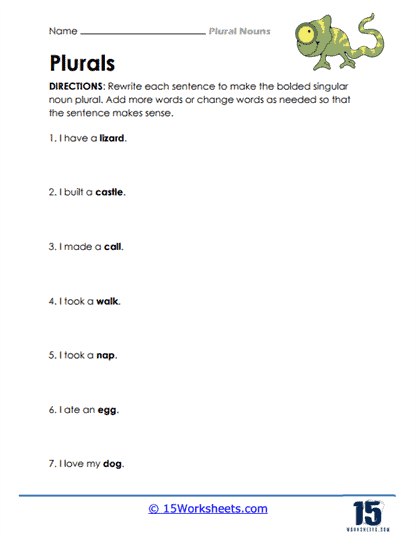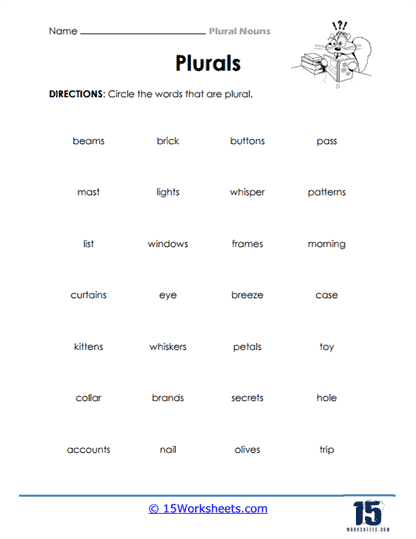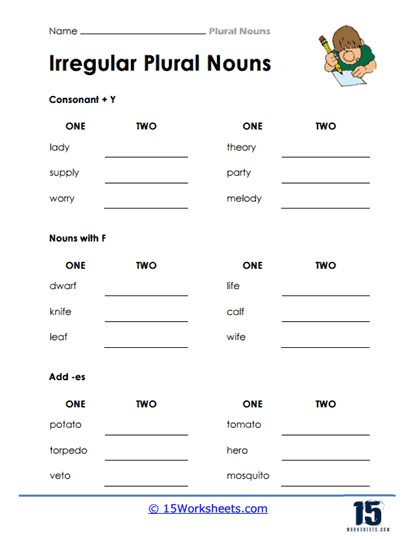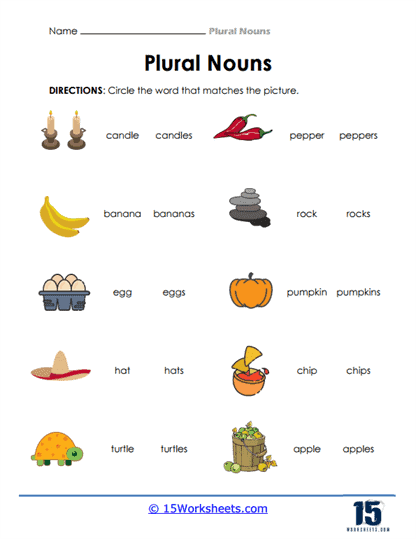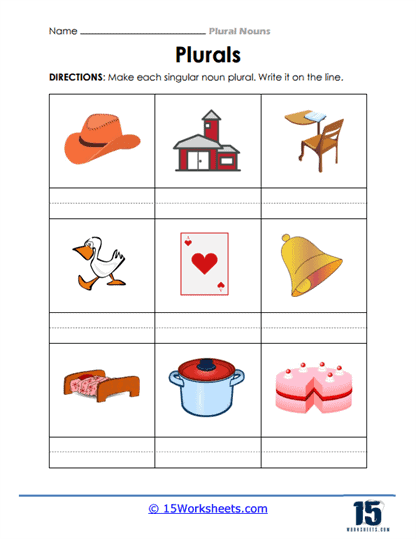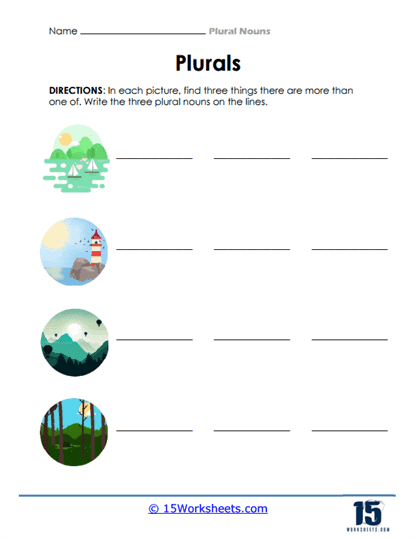Plural Nouns Worksheets
All About These 15 Worksheets
This collection of plural nouns worksheets are designed to help students learn and practice the use of plural nouns in English grammar. These worksheets provide a wide variety exercises that require students to identify and use plural nouns correctly in sentences.
These worksheets include fill-in-the-blank exercises, matching activities, or rewriting tasks. They cover a range of plural nouns, including regular and irregular forms, as well as nouns that are uncountable and do not have a plural form. Through these engaging exercises that utilize colorful illustrations, teachers are able to help their students gain mastery in this topic. By completing these worksheets, students will:
- Expand their vocabulary on plural forms of various nouns;
- Identify the plural forms of nouns by being familiar with their form;
- Transform singular nouns to their plural forms;
- And confidently use plural nouns in their sentences as appropriate.
These worksheets are an important tool that teachers can use to help their students improve their grammar skills and develop accuracy in their writing. Through these exercises, students can gain a better understanding of the rules of using plural nouns and practice applying them correctly. They are also useful for reinforcing grammar concepts taught in the classroom and helping students build confidence in their language abilities.
Plural nouns and how to transform them to singular form
Plural nouns are a type of noun that refer to two or more persons, places, things, or ideas. They are used when referring to multiple entities, as opposed to a single entity.
To change a plural noun to a singular noun, there are several rules in English grammar that you can follow.
- Remove the “s” or “es” at the end of the word:
- Apples → Apple
- Houses → House
- Watches → Watch
- Change the “ies” at the end of the word to “y”:
- Parties → Party
- Countries → Country
- Stories → Story
- Change the irregular plural form to the singular form:
- Children → Child
- Geese → Goose
- Feet → Foot
Note that some plural nouns are the same as the singular nouns, such as “sheep,” “deer,” and “fish.”
Examples of changing plural nouns to singular nouns:
- Apples → Apple
- Boxes → Box
- Parties → Party
- Children → Child
- Geese → Goose
- Sheep → Sheep
In summary, plural nouns are used to refer to two or more persons, places, things, or ideas. To change plural nouns to singular nouns in English grammar, you generally remove the “s” or “es” at the end of the word, change the “ies” to “y,” or change the irregular plural form to the singular form.

